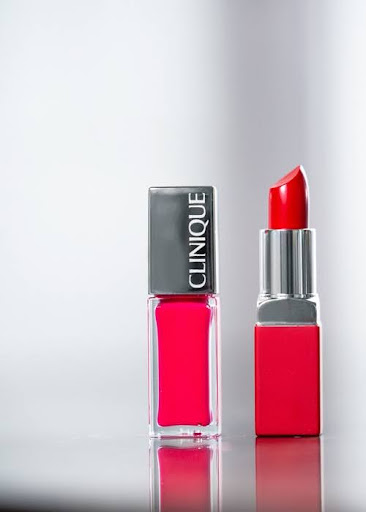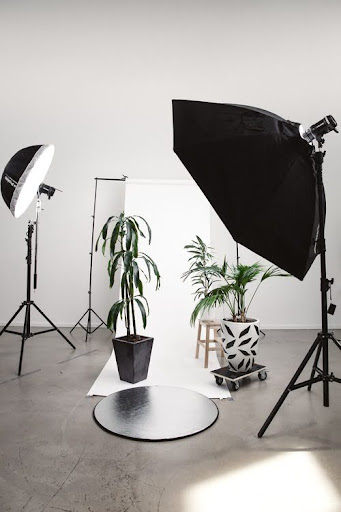
Amazon product photography is a crucial element for sellers looking to stand out. With captivating images that showcase products’ features and appeal, sellers can attract customers, establish credibility, and drive sales. Amplify your online presence and harness the power of visual storytelling with professional Amazon product photography.
In the competitive world of online retail, captivating product photography plays a crucial role in grabbing consumers’ attention and driving sales. Among the various e-commerce platforms available, Amazon stands out as a global giant, providing an immense marketplace for sellers to showcase their products. To make a powerful impact on potential customers, sellers must invest in high-quality images that effectively showcase their products’ unique features and benefits. This is where the art and science of Amazon product photography come into play.
Amazon product photography is a specialized field that focuses on highlighting a product’s aesthetics, functionality, and overall appeal through stunning visuals. Expert photographers skillfully create images that not only meet Amazon’s strict guidelines but also take the product to the next level, turning ordinary objects into desirable must-haves. From creative angles to precise lighting, they skillfully curate every detail to present products in their best possible light.
Importance of High-Quality Product Images on Amazon

Having high-quality product images on Amazon is crucial for several reasons. Firstly, these images create a lasting first impression on potential customers, influencing their decision to explore the product further. Secondly, visuals convey important details that words alone cannot. Clear and detailed images help customers understand the product’s design, features, and dimensions accurately.
Thirdly, high-quality images contribute to brand credibility. Customers associate professional visuals with trustworthiness and reliability. Additionally, optimized images enhance visibility in Amazon search results, increasing organic traffic to the product listing. In a highly competitive marketplace, investing in high-quality product images is essential for success on Amazon.
When selling products on Amazon, having high-quality images is paramount to success. Here’s why:

- First Impressions: Customers form initial impressions based on product images. High-quality visuals can instantly grab attention and create a positive impression, increasing the likelihood of customers exploring further.
- Visual Information: Product images provide valuable visual information that words alone cannot convey. Clear, detailed visuals help customers understand the product’s design, features, and dimensions, enabling informed purchasing decisions.
- Increased Credibility: Professional images contribute to brand credibility. Customers associate high-quality visuals with a trustworthy and reliable seller, enhancing their confidence in the product’s quality and authenticity.
- Enhanced Visibility: Amazon’s search algorithm takes images into account when ranking products. Well-optimized, high-resolution images can improve visibility in search results, driving more organic traffic and increasing the chances of conversions.
- Better Conversion Rates: Compelling product images have the power to captivate customers and persuade them to make a purchase. High-quality visuals can highlight the product’s benefits, making it more enticing and increasing conversion rates.
In summary, high-quality product images on Amazon play a crucial role in attracting customers, establishing credibility, improving visibility, and ultimately driving sales. Investing in professional photography is an essential strategy for success in the competitive e-commerce landscape of Amazon.
Amazon Image Requirements

Amazon has specific image requirements for product listings to ensure a consistent and high-quality shopping experience for customers. Here are some key image requirements on Amazon:
- Image Size: Images must be at least 1000 pixels on the longest side, with a recommended size of 2560 pixels or higher to enable zoom functionality.
- Image Format: Amazon supports JPEG (.jpeg/.jpg) format for product images.
- Background: The product should be shown against a clean, white background. No additional props, logos, text, or watermarks are allowed.
- Image Quality: Images should be sharp, well-lit, and in focus. They should accurately represent the product color, texture, and details.
- Product Representation: The main product image must show the entire product and not include any additional objects or accessories that are not part of the package.
- Image Dimensions: All images should have square dimensions, preferably a 1:1 aspect ratio.
- Image File Naming: Images should be named appropriately, including the product’s UPC code or ASIN for better organization.
It’s important to familiarize yourself with Amazon’s complete image guidelines and requirements, as they may change over time. Adhering to these guidelines ensures your product listings meet Amazon’s standards and enhance the overall shopping experience for customers.
Setting Up a Product Photo Studio

Setting up a dedicated product photography studio can greatly enhance the quality and consistency of your product images. Here are some essential steps to help you get started:
- Space: Find a suitable space with ample room to set up your equipment and work comfortably. It can be a spare room, garage, or dedicated area within your home or office.
- Lighting: Invest in good lighting equipment, such as studio lights or continuous LED lights. Ensure they provide consistent, adjustable, and diffused lighting to eliminate shadows and create a well-lit environment for your product shots.
- Background and Props: Choose a clean, neutral background like a white sweep or a seamless paper backdrop to ensure focus remains on the product. Additionally, you may require props like mannequins, display stands, or relevant accessories to showcase the product effectively.
- Camera and Tripod: Invest in a high-quality camera capable of capturing sharp, high-resolution images. A tripod will help stabilize the camera and ensure consistent framing and focus.
- Product Setup and Staging: Set up a consistent workflow for staging and preparing products for photography. Use product stands, holders, or styling tools to position products correctly and provide various angles.
- Editing Software: Familiarize yourself with photo editing software like Adobe Photoshop or Lightroom for post-processing tasks like color correction, resizing, and retouching.
- Product Styling and Composition: Develop a sense of product styling and composition to create visually appealing images. Pay attention to details, angles, and product features that highlight unique selling points.
- Workflow and Organization: Establish an efficient workflow for capturing, editing, and organizing your product images. Use consistent file naming conventions and folder structures for easy retrieval.
Remember, practice and experimentation will help you refine your product photography skills over time. Continuously analyze and improve your images based on customer feedback and market trends to create compelling visuals that drive sales.
Preparing Products for Photography

Preparing your products properly before photography can greatly impact the quality and appeal of your images. Follow these steps to ensure your products are ready to shine in front of the camera:
- Clean and Polish: Thoroughly clean and polish your products to remove any dust, smudges, or fingerprints. Use appropriate cleaning solutions and soft cloth to avoid scratching delicate surfaces.
- Remove Packaging and Labels: Remove any packaging materials, price tags, stickers, or labels that may distract from the product itself. Make sure the product is presented in its optimal form.
- Smooth Out Wrinkles and Imperfections: For fabric-based or clothing items, steam or iron out any wrinkles or creases. Pay attention to details like loose threads or blemishes and address them before photography.
- Assemble and Arrange: If your product requires assembly or has multiple components, ensure that everything is properly assembled and arranged. Follow the product instructions to ensure accurate representation.
- Styling and Props: Consider the style and theme of your product and choose appropriate props or accessories that enhance its presentation. However, keep the focus on the product itself and avoid overcrowding with too many props or distractions.
- Positioning and Angles: Experiment with different angles and orientations to find the most visually appealing compositions. Highlight features, textures, and unique selling points.
- Product Size and Scale: If necessary, indicate the scale or size of your product by including reference objects in the shot. This helps customers understand the product’s dimensions and scale accurately.
- Packaging and Branding: Pay attention to the packaging and branding aspects of your product. Ensure that logos, labels, or packaging designs are positioned and presented properly for brand consistency.
By investing time and effort in preparing your products for photography, you can capture stunning images that effectively showcase the product’s quality and appeal. This attention to detail will help create a positive impression on potential customers and increase the chances of successful sales.
Composing Compelling Product Images
When it comes to creating compelling product images, composition plays a crucial role in capturing viewers’ attention and showcasing your product in the best possible way. Here are some key tips to help you compose captivating product images:

- Firstly, identify the focal point of your product – the features or selling points that you want to highlight the most. Make sure to frame and position your product in a way that draws attention to this focal point.
- Utilize the rule of thirds to create a balanced composition. Divide your frame into a grid of nine equal parts and position important elements along the intersecting lines or at their intersections. This technique adds visual interest and guides the viewer’s eye.
- Pay attention to lighting, as it greatly affects the overall look and feel of your product images. Experiment with different lighting setups, whether it’s natural light, studio lights, or diffused lighting, to highlight the product’s textures and contours. Be mindful of shadows and overexposed areas that may diminish the quality of your image.
- Consider the background of your product image. Opt for a clean, uncluttered background that doesn’t distract from the product itself. A light or white backdrop is commonly used, but don’t hesitate to experiment with contrasting colors or textured surfaces.
- Capture your product from various angles and perspectives to showcase its features and offer diverse viewpoints. This helps provide a comprehensive understanding of the product to potential customers. Try overhead shots, close-ups, or unique angles that highlight the product’s details or usage scenarios.
- Create a sense of depth by using a shallow depth of field, which blurs the background and draws attention to the main subject. Experiment with different apertures and focal lengths to achieve the desired effect.
- Position your product strategically within the frame, considering its shape, symmetry, and balance. Utilize leading lines or curves to guide the viewer’s eye towards the main subject.
Lighting and Exposure Techniques
When it comes to photographing products for Amazon, proper lighting and exposure techniques are crucial for capturing high-quality images that effectively showcase your products. Here are some tips to help you achieve optimal lighting and exposure:

- Use Soft Lighting: Harsh, direct lighting can create unflattering shadows and highlights. Instead, opt for soft lighting sources such as diffused natural light or studio softboxes. Soft lighting provides even illumination, minimizes harsh shadows, and brings out the details of your products.
- Three-Point Lighting Setup: Consider using a three-point lighting setup to evenly illuminate your products. This setup includes a key light, a fill light, and a backlight. The key light acts as the main light source, the fill light softens shadows, and the backlight separates the product from the background.
- Diffuse Light Sources: If using artificial lighting, consider diffusing the light to create a softer and more flattering glow. This can be achieved by using diffusers or by bouncing the light off white surfaces or reflectors.
- White Balance Adjustment: Ensure accurate colors in your photographs by adjusting the white balance settings on your camera or during post-processing. Proper white balance prevents color casts and ensures that your products appear true to life.
- Exposure Bracketing: When shooting in challenging lighting conditions, such as highly reflective or dark products, consider using exposure bracketing. This technique involves taking multiple shots at different exposure settings (underexposed, properly exposed, and overexposed). It allows you to capture a range of exposures and select the best one during post-processing.
- Avoid Overexposure and Underexposure: Properly expose your images by avoiding both overexposure (washing out details in bright areas) and underexposure (losing details in shadows). Use the camera’s histogram or exposure compensation settings to ensure accurate exposure.
- Test and Adjust: Continuously review and adjust your lighting setup and camera settings as necessary. Take test shots, review them on a computer screen, and make necessary adjustments to achieve the desired results.
Remember, consistent lighting and exposure across all your product images will create visual harmony and a professional look for your Amazon listings. Take the time to experiment, test, and refine your techniques to capture stunning product photographs that attract and engage potential customers.
Amazon Image Requirements

Image editing and post-processing play a vital role in the e-commerce industry, where images have a significant impact on customers’ purchasing decisions. Here’s why image editing is important for e-commerce:
- Enhancing Visual Appeal: Image editing allows you to enhance the visual appeal of your product images. You can adjust lighting, contrast, and colors to make your products look more attractive and vibrant. By improving visual aesthetics, you capture customers’ attention and create a positive impression.
- Consistency and Professionalism: Image editing ensures consistency and professionalism across your product catalog. By maintaining a uniform look and style, your brand appears more credible and trustworthy. Consistent editing also helps build recognition and reinforces your brand identity.
- Highlighting Product Details: Post-processing techniques like sharpening and clarity adjustments help highlight important details and textures of your products. This allows customers to get a better understanding of the product’s quality, features, and unique selling points.
- Background Removal and Product Extraction: Image editing allows you to remove backgrounds, making your product stand out on a clean, white background. This technique removes distractions and creates a professional, e-commerce-friendly look. You can also extract or isolate the product from its background, enabling flexibility in using the image across different platforms or in composite visuals.
- Image Optimization for Web: Image editing involves optimizing images for web use, ensuring the right file formats, sizes, and resolutions. Optimized images help reduce page loading time, ensuring a smooth and seamless shopping experience for customers.
- Retouching and Image Corrections: Image editing provides the opportunity to retouch and correct imperfections. You can remove minor blemishes, fix color issues, and adjust product alignment. This attention to detail conveys professionalism and ensures that your products look their best.
- Adapting to Platform Requirements: Different e-commerce platforms, such as Amazon, may have specific image requirements. Image editing allows you to adapt and meet those requirements, ensuring compliance and maximizing the visibility of your products within the platform.
Image editing and post-processing are essential for e-commerce success. By enhancing visual appeal, maintaining consistency, highlighting product details, and adhering to platform requirements, image editing helps create compelling product visuals that attract customers, build trust, and increase sales.
Dealing with Restricted Products

Dealing with restricted products on Amazon requires careful attention to comply with their policies and guidelines. If you plan to sell restricted products on Amazon, follow these steps to ensure a smooth and compliant selling experience:
- Research and Understand Restricted Categories: Thoroughly review Amazon’s policies and guidelines to identify the restricted product categories. Take note of the specific requirements and restrictions associated with each category.
- Fulfill Required Qualifications: Some restricted product categories may have specific qualifications or certifications that sellers must meet. Ensure that you have the necessary approvals, licenses, or documentation to sell in those categories.
- Apply for Approval: For certain restricted categories, sellers are required to apply for approval before they can list their products. Submit all the requested information, including any relevant documentation, to Amazon for review.
- Comply with Product Listing Requirements: When creating product listings, ensure that you provide accurate and detailed information about your products. Follow Amazon’s guidelines for titles, descriptions, images, and other listing components.
- Properly Package and Label: If your restricted product requires specific packaging or labeling, make sure to comply with those requirements. Ensure that your products are packaged securely and labeled correctly before shipment.
- Stay Updated on Regulations: Stay informed about any changes or updates to regulations related to the restricted products you sell. Regularly check for updates from regulatory agencies and adjust your practices accordingly.
- Monitor and Manage Reviews: Keep an eye on customer reviews and feedback related to your restricted products. Promptly address any concerns or issues raised by customers to maintain a positive reputation.
- Seek Professional Guidance if Needed: If you are unsure about compliance requirements or face challenges with restricted products, consider seeking legal or expert advice to ensure you meet all obligations and minimize risks.
Remember, Amazon takes the issue of restricted products seriously and violators can face penalties, including account suspension. By adhering to Amazon’s policies, complying with regulations, and maintaining transparency with your customers, you can navigate the selling process while dealing with restricted products on Amazon effectively.
Understanding Restricted Categories and Products

- Restricted categories and products on e-commerce platforms like Amazon are specific groups of items that have additional requirements or restrictions for sellers. Examples include hazardous materials, prescription medications, weapons, alcohol, tobacco and vaping products, and adult-oriented items. Compliance with these restrictions is essential to ensure safety, legal compliance, and a positive shopping experience for customers. Non-compliance can lead to penalties, account suspension, or legal consequences.
- Some commonly restricted categories include hazardous materials (Hazmat), prescription medications, weapons and firearms, alcohol, tobacco and vaping products, and adult products.
- Hazardous materials encompass products that contain substances that pose risks during storage, transportation, or use such as flammable liquids, aerosols, or batteries.
- Selling prescription medications on platforms like Amazon is restricted, and typically only authorized pharmacies or sellers with specific qualifications are allowed to sell these products.
- Weapons and firearms are subject to strict legal regulations, and selling them without proper licenses and compliance is prohibited.
- Alcohol sales on e-commerce platforms require special licenses and adherence to regulations such as age verification and specific labeling requirements.
- Tobacco and vaping products are subject to age restrictions and legal regulations. Sellers must ensure compliance with local laws regarding sale and advertising.
Products classified as adult-oriented, such as adult toys or explicit content, are subject to restrictions due to their explicit nature. Additional documentation or age verification may be required, and these products usually must adhere to content guidelines.
Strategies for Showcasing Sensitive Products

When showcasing sensitive products, such as medical supplies, adult products, or items that require careful handling or marketing considerations, it’s important to approach the presentation with sensitivity and professionalism. Here are some strategies to effectively showcase sensitive products:
Accurate and Informative Product Descriptions
Provide accurate and detailed descriptions of the product while highlighting its features and benefits. Be transparent about any sensitive aspects or restrictions associated with the product to manage customer expectations. Accurate and informative product descriptions are the unsung heroes of the e-commerce world, bridging the gap between a potential customer and a successful sale. These descriptions serve as virtual sales representatives, providing customers with essential information about a product and helping them make informed purchasing decisions.
Professional Product Photography
Invest in high-quality product photography that showcases the sensitive product in a tasteful, clean, and professional manner. Use appropriate lighting and angles to enhance the visual appeal while maintaining a respectful presentation. Professional product photography elevates your brand’s image. High-quality images with proper lighting, composition, and attention to detail showcase your products in the best light. They build trust with customers, highlight key features, and drive sales, making them an essential investment in your e-commerce success.
Consider Packaging and Presentation
If applicable, highlight any discreet or specialized packaging that ensures privacy or confidentiality. Emphasize features that contribute to the sensitive nature of the product, such as tamper-proof seals or discreet labeling. Packaging and presentation are integral elements of the customer experience. Thoughtful, visually appealing packaging enhances the perceived value of your products and leaves a lasting impression. It can also contribute to brand recognition and loyalty, setting your products apart in a competitive market.
Dedicated Product Categories
On e-commerce platforms, consider utilizing dedicated categories or sections for sensitive products to ensure appropriate segregation and ease of discovery for customers seeking such items. Dedicated product categories streamline the online shopping experience, making it easier for customers to find what they’re looking for. Organizing products into clear and distinct categories enhances navigation, aids searchability, and encourages exploration. This approach improves user satisfaction, increases conversions, and optimizes your e-commerce website’s overall efficiency.
Proper Age Verification
If selling age-restricted products, implement an age verification process at checkout to ensure compliance with legal requirements and to safeguard against selling to minors. Proper age verification is a critical safeguard in industries where age restrictions apply, such as alcohol, tobacco, or adult content. It ensures that only eligible individuals can access or purchase these products or services, preventing legal issues and promoting responsible consumption. Effective age verification methods may include ID checks, online verification systems, or age-gated content on websites.
Clear Usage Instructions and Warnings
Include clear and concise usage instructions, warnings, and disclaimers where necessary. This helps customers understand how to use the product safely and responsibly. Clear usage instructions and warnings are essential for products, particularly in industries where safety is paramount. They provide consumers with guidance on how to use products safely and effectively while highlighting potential risks. This information helps prevent accidents, ensures compliance with regulations, and builds trust between the brand and its customers.
Trust and Privacy
Emphasize your commitment to customer privacy and discretion in handling sensitive orders. Assure customers of secure packaging, discreet billing, and any other measures you have in place to protect their privacy. Trust and privacy are fundamental principles in the digital age. Trust encompasses a brand’s credibility, reliability, and commitment to fulfilling promises, fostering customer loyalty and positive relationships. Privacy involves safeguarding individuals’ personal data, respecting their rights, complying with privacy regulations, building confidence, and maintaining ethical practices. Together, trust and privacy form the bedrock of responsible and successful business conduct in today’s interconnected world.
Customer Support and Communication
Be readily available to answer customer inquiries or concerns about sensitive products promptly and professionally. Provide clear channels for support, including email, live chat, or phone, ensuring that customers feel comfortable reaching out. Customer support and communication are cornerstone elements of exceptional customer service. They involve promptly addressing customer inquiries, concerns, and issues through various channels such as phone, email, chat, and social media. Effective communication fosters a strong customer-brand relationship, builds trust, and leads to satisfied and loyal customers. It also provides valuable insights for product improvement and business growth.
Compliance with Applicable Regulations
Stay updated on relevant laws and regulations surrounding the sale and marketing of sensitive products. Ensure your practices align with legal requirements, age restrictions, and any specific guidelines set by regulatory bodies. Compliance with applicable regulations is a non-negotiable aspect of responsible business operations. It involves adhering to local, national, and international laws and standards relevant to your industry. Ensuring compliance safeguards against legal repercussions, protects consumers, and upholds ethical business practices. It also contributes to a positive brand reputation and fosters trust with stakeholders.
By implementing these strategies, you can effectively showcase sensitive products in a respectful, informative, and customer-centric manner that meets the unique needs of your target audience while maintaining compliance and professionalism.
Conclusion
Showcasing sensitive products requires a thoughtful and careful approach. By providing accurate descriptions, using professional photography, considering packaging and presentation, implementing age verification, offering clear instructions and warnings, prioritizing privacy, and ensuring compliance with regulations, sellers can effectively present sensitive products in a professional and respectful manner. Building trust with customers and maintaining a commitment to professionalism are key to successfully showcasing sensitive products while meeting customer needs.

